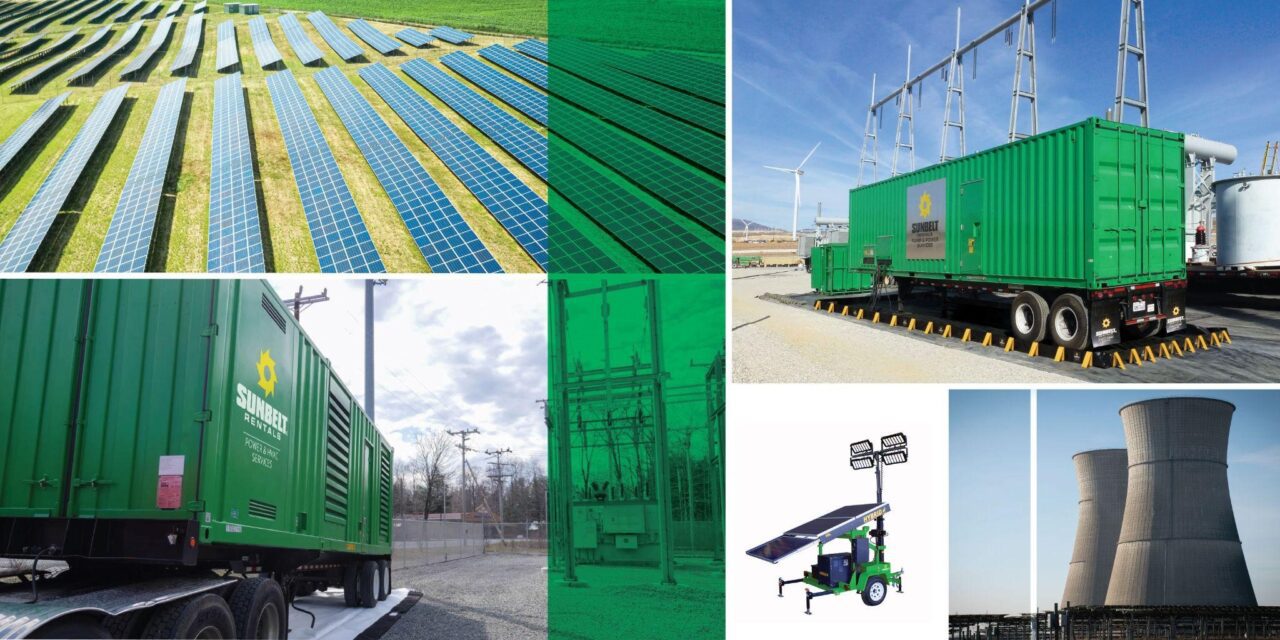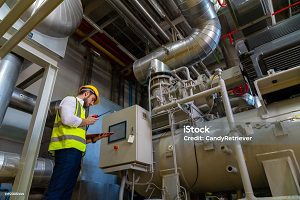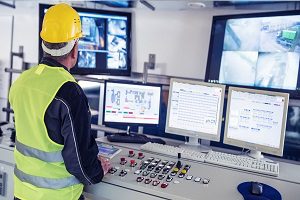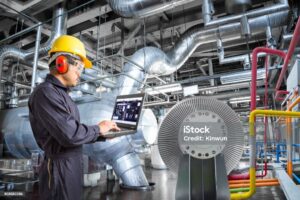How to Reduce Downtime in Your Power-Generation Facility

When it comes to operational efficiency, unplanned downtime can cause operations at even the most efficient power plant to come to a grinding halt. These events can cause customer disruptions, loss of valuable work hours, and decreased profitability. Unfortunately, they may also be impossible to avoid. But high-quality tools and equipment – coupled with a rental partner dedicated to helping you mitigate operational disruptions – can make all the difference.
Downtime falls into two categories:
- Planned downtime is scheduled, dedicated time for routine maintenance.
- Unplanned downtime consists of emergency or reactive work that can be triggered by equipment failure, operator error, or power outages from severe weather.
Whether planned or unplanned, downtime shouldn’t last a minute longer than necessary. Learn how to deploy preventive maintenance, predictive maintenance, and contingency plans to reduce downtime.
Take a Holistic Approach with a Preventive Maintenance Plan
Preventive maintenance — a collection of processes, guidelines, and tools for conducting routine maintenance on equipment — is critical for decreasing unexpected machinery failures and ensuring an efficient workflow. This holistic approach is the opposite of reactive maintenance, which focuses on resolving a specific issue rather than carrying out regular maintenance regardless of machine condition.
Reactive maintenance is best utilized when the part or machine is inexpensive and easy to replace. The run-to-failure strategy may cost less right now, but eventually, you’ll spend far more money and resources than necessary. In fact, the Marshall Institute reports that you’ll pay two to five times as much as you would have if you’d performed proactive maintenance — either preventive or predictive.


Create a Preventive Maintenance Plan with This Simple Process:
- Determine goals to reduce downtime and reactive maintenance costs.
- Take inventory of your equipment and assets.
- Study the manufacturer’s guidelines for each piece of equipment.
- List preventive maintenance tasks and frequency for each piece of equipment.
- Schedule maintenance yearly, monthly, weekly, and daily.
- Work with a knowledgeable partner who can provide temporary equipment to avoid production downtime.
The rule of thumb for the right balance in industrial process cooling applications, for example, is 75% preventive, 25% reactive. But if you don’t invest in preventive maintenance, breakdown of a critical workhorse — such as a cooling tower — means you’ll face downtime, lost production, safety risks, and unworkable environmental conditions.
Preventive maintenance is the better choice for equipment where repair or replacement costs run high and parts need periodic attention.
If you plan, you’ll avoid paying more for:
- Complicated repairs
- Replacement parts you don’t stock
- Expedited shipping to receive those parts
- Overtime for workers performing the repair
- Customer disruptions
Harness the Power of a Predictive Maintenance Plan
Preventive maintenance will save you time and money compared to reactive maintenance, but predictive maintenance is the next critical step. Instead of simply scheduling preventive maintenance according to the original equipment manufacturer’s suggested intervals, your machines can let you know when they need attention — and you won’t have to shut them down to determine their condition.
With the following in place, you’ll know how long you have to service a key part or machine before it grinds to a halt. As a result, you won’t waste a minute of any component’s usable life.
- A basic setup to collect data
- Sensors to measure vibration, temperature, pressure, rotating speed, chemical composition, and many other parameters
- A software system to handle monitoring and analysis.


Consider most process cooling equipment, for example. The combination of fans, drives, motors, bearings, and varying loads puts enormous stress on mechanical components, eventually leading to failure. The question is: When?
One way to determine when the bearings and gears in a rotor are going bad is simply to listen. But that requires access to the equipment, which often isn’t available when it’s running. And then you’re gathering information only on one component. You may still not know the best time to shut down the equipment to perform preventive maintenance.
On the other hand, predictive maintenance lets you shift from reacting to problems and a keep-it-running philosophy to analyzing performance and continually improving processes.
Let’s walk through how this strategy worked for a large power-generation company.
A Large Power-Generation Company Finds Peace of Mind with Predictive Maintenance
A major power-generation company leveraged an end-to-end solution to implement predictive maintenance plantwide across its 30 facilities. The goal was to replace monthly manual data collection and analysis with daily remote data collection and monitoring.
Now, when the predictive system discovers an anomaly, it sends an email to alert key staff. The alert provides information in graphical form to pinpoint deviations and deliver an initial diagnosis. A recommended time frame also lets the team schedule a fix when the cost or time required will be lower, the plant will be shut down for maintenance, or the demand is lower.
To make the most of the reduced downtime afforded by predictive maintenance, the power producer implemented a comprehensive schedule to perform work with the help of Sunbelt Rentals. At the start of each quarter or fiscal year, Sunbelt Rentals meets with plant representatives to discuss maintenance activities, temporary utilities, logistics, budget, and communications — all to ensure that power consumers will never be without power even for a moment. Any time a plant experiences an issue, maintenance personnel can simply reference the planning document created, and Sunbelt Rentals puts it into action.
Develop a Contingency Plan to Cover the Unknowns
With a contingency plan in place and a partner with temporary equipment, engineering knowledge, and expertise to ensure smooth installation, you can change a reactive response to a proactive one.
To develop an effective contingency plan, start with these five steps:
- Identify situations that would put your production goals at risk. You know your facility’s tolerances for ambient temperature and moisture. Brainstorm with your employees and get creative about what could go wrong. Rank the risks in order of probability and impact to your business.
- Determine which pieces of equipment are critical to your operations. List their performance specifications, and then look for temporary equipment that could replace each one in an emergency, along with any accessories required. Install connection points for temporary process cooling equipment and power supply in your structure before they’re needed.
- Create a contingency plan for each scenario identified in Step 1, including the timeline, source for equipment, logistics for bringing it on-site and installing it, and communications to make sure everyone knows what to do and when. Keep the plan for each piece of equipment on paper hear the unit, not on a computer that could be inoperable in an emergency.
- Work with a partner who will look at your operations, help determine your requirements in an emergency, agree to a response time for delivering equipment, and outline everything you need for a seamless installation and recovery, whether it’s power generation, scaffolding, or a forklift.
- Educate your workforce. Your staff should respond to incidents with memory as embedded as the muscle memory they use for a golf swing. They’ll need training to build discipline and processes, react appropriately, and avoid making mistakes that could cost your plant and increase your downtime. They’ll also need to practice the plan so it’s as automatic as a fire drill.
Prepare for Natural Disasters
No part of the world is immune from a natural disaster, whether it’s a hurricane, an earthquake, a wildfire, a flood, a tornado, or a volcanic eruption. In such an event, your company will need help getting back online. For power-generating plants, much of the preparation for natural disasters is included in preventive maintenance and contingency plans.
Making sure your contingency plan covers all the details is the key to saving every spare minute in natural disaster situations. A rental partner can help your team establish contingency plans for outages and get equipment, including elevated lifter, transformer, and switchgear rentals, to you quickly, so you can safely address whatever pressing issue you’re facing.
Consult With a Partner — At No Cost
Whether it’s preventive or predictive maintenance on your list or you’re developing a contingency plan, you need a partner who’s just as invested in saving time and money as you are. Sunbelt Rentals provides high-quality equipment and accessories, engineering knowledge, and installation expertise wherever you need it, 24/7.
Contact Sunbelt Rentals to learn how we can support you with the planned and unplanned maintenance needs of your power-generation facility, from planning to execution.